5 SAMPLES OF THE DAILY EMAILS YOU CAN EXPECT
SOME ARE SHORT. SOME ARE LONG.
EACH ONE PROVIDES HELPFUL ADVICE OR INSPIRATION FOR ANIMATORS

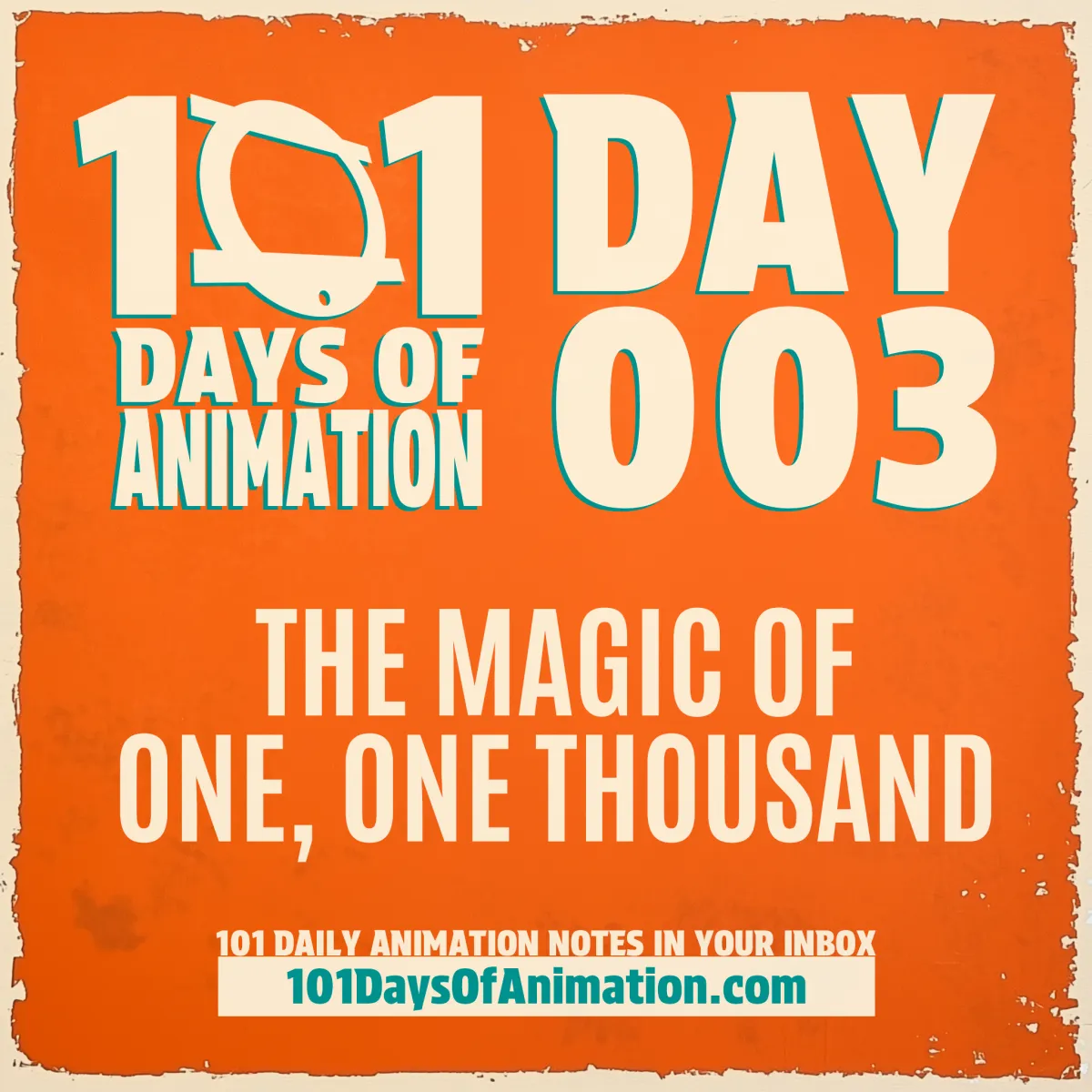
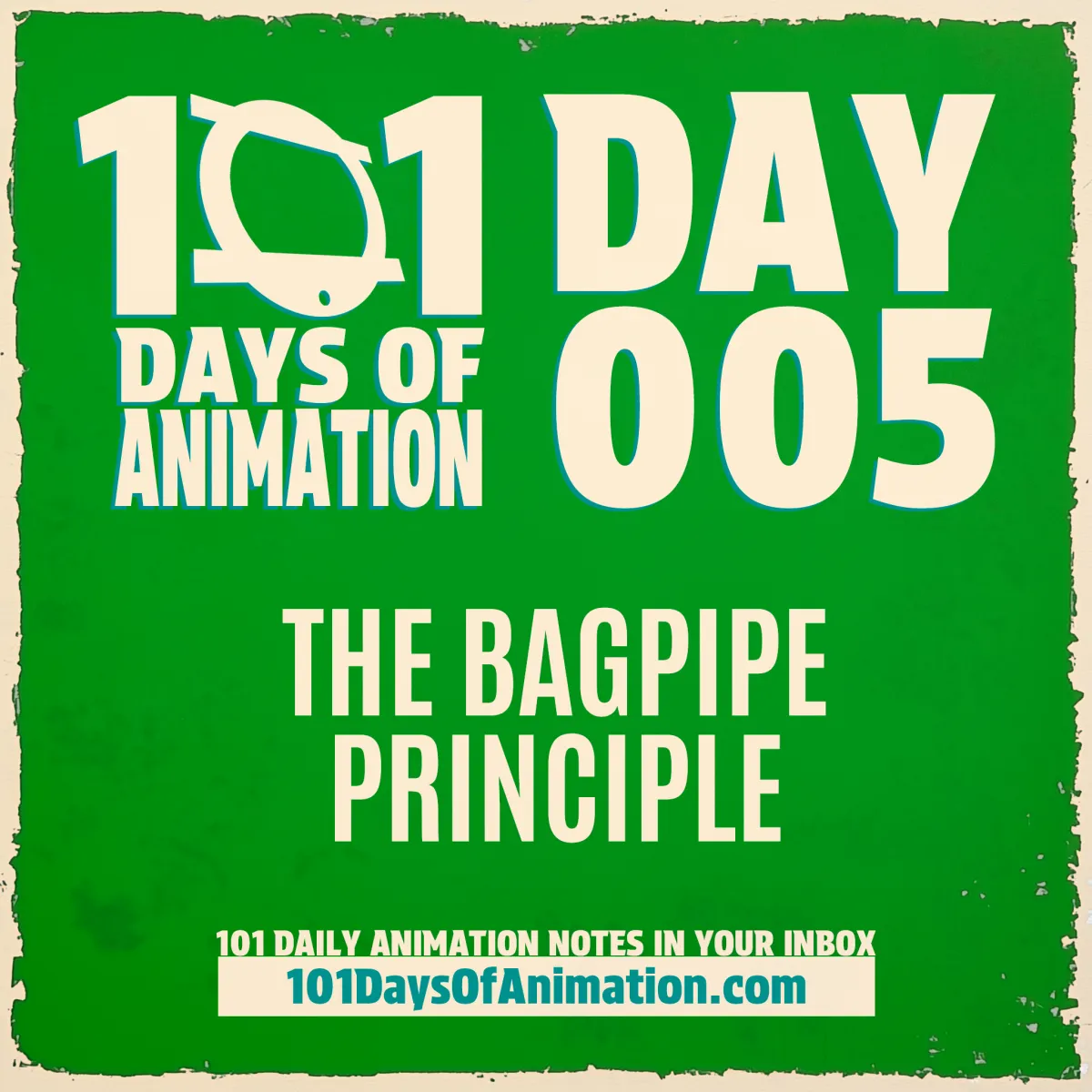
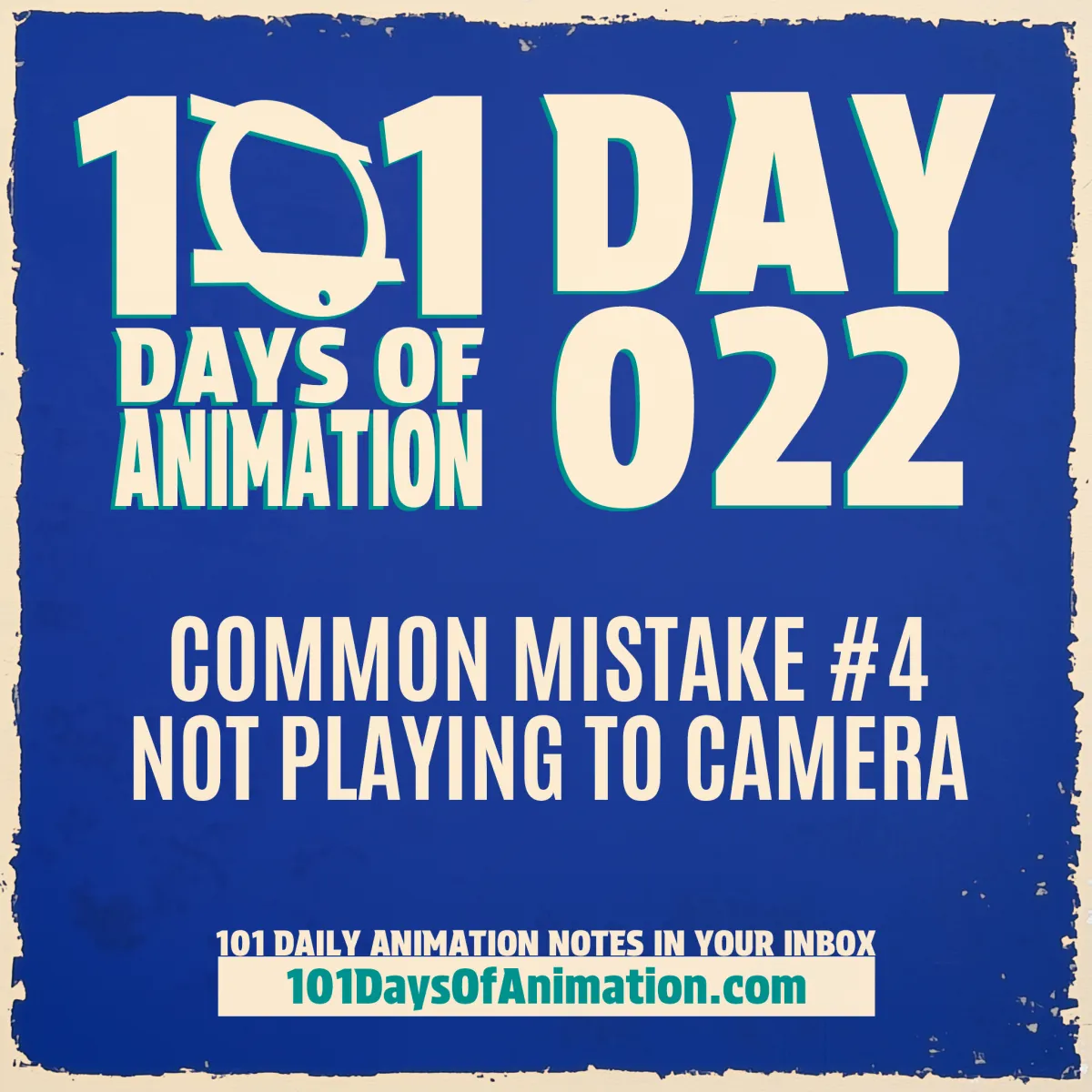
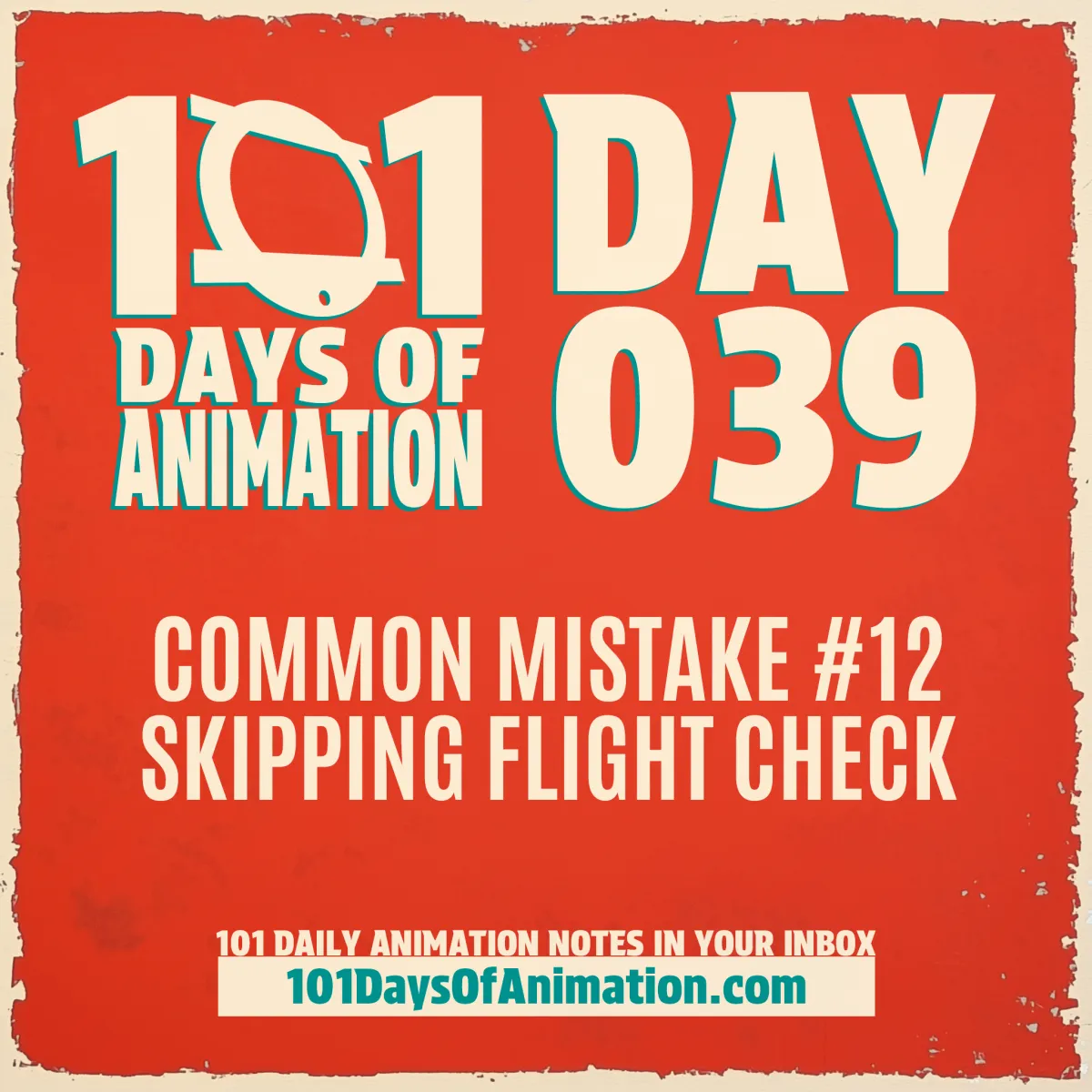
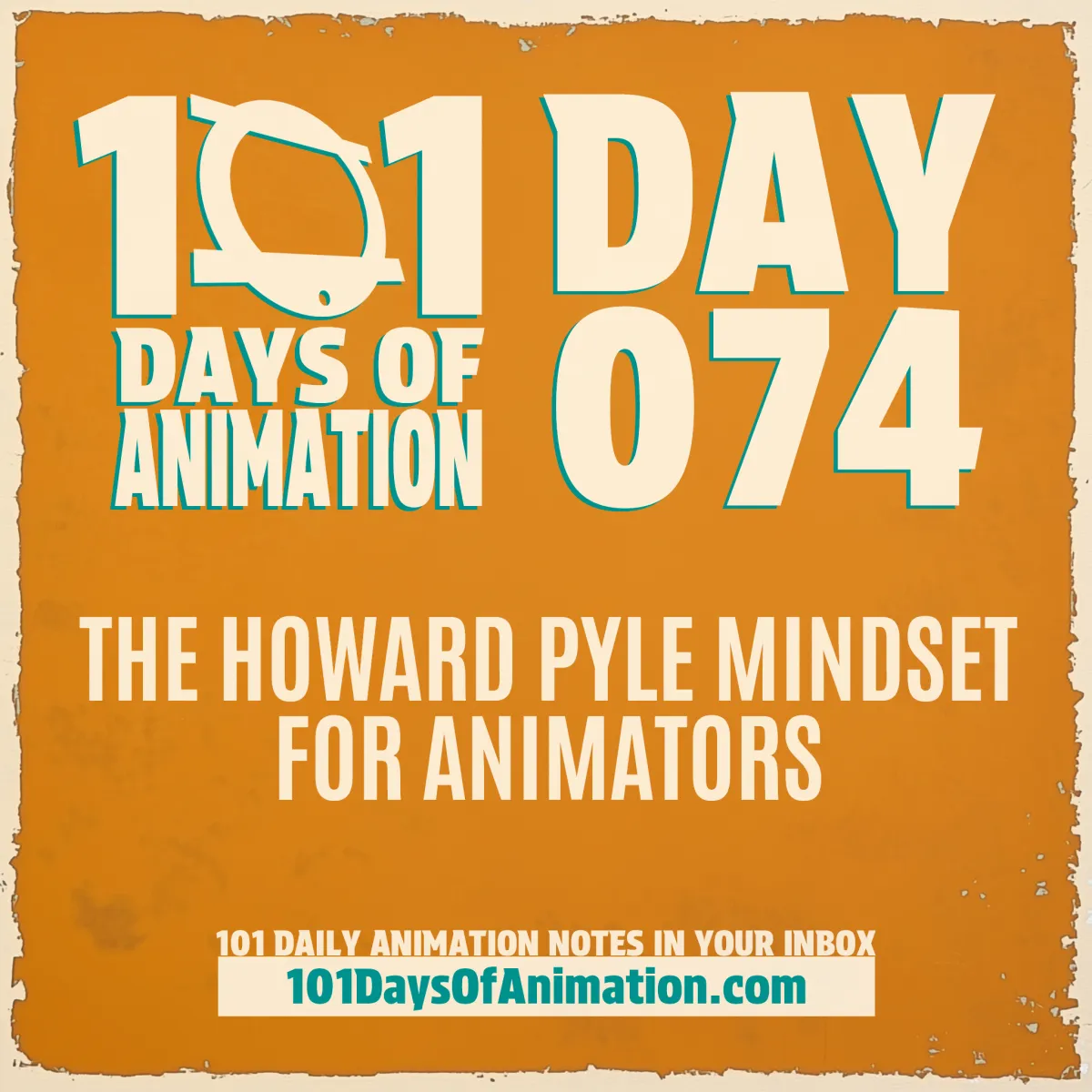

It took me years before I learned this easy way to measure timing without using a stop watch or counting frames. It had more application when I started animating in the day of celluloid. We had to wait for our scenes to be shot under a camera, processed overnight on high contrast film, and cut into the edit on a Moviola.
There is still relevance for this timing measurement today and it can save you having to open a scene file to count frames.
Remember “One one thousand, two one thousand, three one thousand…”? As kids we learned this playing hide and seek, but it is useful in animation.
Four syllables for one second, each syllable 1/4 per second.
If we’re working at 24 frames per second in animation, each syllable is 6 frames.
Animators generally work on 2s. One drawing for every two frames. That’s 12 drawings per second. This is our baseline.
That means each syllable measures 3 drawings.
One one thou-sand. 12 drawings (24 frames)
One one thou-…. 9 drawings (18 frames)
One one…. 6 drawings (12 frames)
One…. 3 drawings (6 frames)
If I time a movement to three one thou-…, how many drawings that? 12+12+9 = 33 drawings, or 66 frames.
If we ask ourselves, is this a “one...” action or a “one one…” action? This helps us zero in on whether the action happens in 3 drawings or 6.
Over time you’ll be able to shed this device because it will become second nature, and without reciting “One one thousand” in your head.

Most animators treat breathing as an effect. It’s so much more. Breathing is life.
Imagine you’re cast as the lead animator of a bagpipe that magically comes to life as a character. Let’s call her Maggie the Bagpipe. How would you approach the animation of Maggie?
Aside from a thick Scottish accent, your focus would be on working out how the inflation and deflation of the bag is used to support her dialog, right?
Before Maggie speaks, you would animate an inflation of the bag, and then, as she talks, the bag deflates as the air is spent.
If you were a director and your lead animator on Maggie showed you animation where the bag never expanded or contracted, what would you think? You would do some soul-searching about whether you cast the right animator for the job.
Humans, and humanoid characters, are essentially a bagpipe. We are a wind instrument. Our vocal cords are the reed and our lungs are the bags.
Our wind bags are not as visible as the bags of a bagpipe because they live inside a ribcage, but they are there. Our chest expands and contracts as our lungs inflate and deflate. Sometimes it’s subtle, sometimes it’s pronounced.
As animators, we tend to only think of breathing when it’s pronounced; when our characters are gasping for air. And then, it borders on cliche’. We all do it. I’m guilty as well.
If you want to add some life and pizzazz to your animation, think about the lesser amounts of breathing. When a character does strenuous activity, we animate breathing. Dialog can be a strenuous activity. It requires breath. Dialog is a controlled exhale. The exhale requires an inhale.
In casual dialog, we breathe through our nose and our mouth and it’s not very obvious. But with long lines and stronger dialog, our breathing is more obvious. Our mouth animation accommodates not only the exhale that forms words, but the inhale of air that prepares us for the next line.
I’m not suggesting that all characters breathe and that all animated shows have a design where breathing would work well. But we should think about it beyond making phonemes of dialog. We are, after all, animating a bagpipe character.

Seems obvious, doesn’t it? Especially for 2D animators, because you are the camera. 3D animators aren’t so lucky. In fact, 3D animators have to be very disciplined to pay attention to the render camera because they can create as many cameras as they like to animate their character. I’ve seen some 3D animators work blind to the render camera.
2D animators aren’t immune from not playing to camera. Knowing where the camera is and playing to the camera are two very different things. It may be easier for 2D animators to know where the camera is, but that doesn’t prevent them from not playing to camera.
The first mark of playing to camera is having good silhouettes in your performance. Good silhouettes should be found in your keys and extremes. Good silhouettes should be carried throughout your performance. Without a good based of silhouettes in animation is like an actor who mumbles and clouds their dialog with um’s and uh’s.
The second mark of playing to camera is to show the important emotion on the face. Don’t go into near-profile or turn your character away from the camera unless it’s called for, or unless the strength of the emotion is best carried in the silhouette.
I often give animators these kinds of retakes: “Please turn their face more to camera when they say the line...” “This line should not be delivered in profile. Turn them more toward camera so we can see the change of expression.” “You’re playing their reaction in that uncanny almost-profile space — it’s not profile, and it’s not 3/4. It’s not an appealing angle for the character and it hides the expression.”
Sometimes I receive a response that’s something like, “I did that because in the action they have this business to do between pose A and pose B. It’s just more natural this way and I have to get them to make two steps on that turn.”
No, no, no, no. Mechanics of stepping do not dictate performance. What would be “natural” is not our goal. Our goal is heightened performance, heightened action. Performance rules all. Physical mechanics or “naturalness” of action should never rob the performance or clarity of emotion.
Think about it this way. The director put the camera in the best place to capture the strongest acting performance. That’s your stage. The four sides of the picture frame are your stage. Give us the best performance within that frame that you can. Think in terms of emotion, not mechanics. Always, always, play to the strength of the camera frame.

It’s our human nature to jump into an assignment without being fully prepared. The clock is ticking. The deadline looms. We spent too much time chatting in the kitchen and time got away from us. We rush back to our desk and jump right into our assignment, thinking we have everything we need.
Then we show our first pass to the director and he asks, "Where's that special pose the client provided?" Special pose? We forgot to look for that special client drawing. It's an instant retake without that pose. We go back to our project file, and there it is on that hidden layer. And guess what? Most of the animation will have to be redone to incorporate that special pose.
That’s a very costly mistake that will cause you to miss your deadline -- unless you stay late or work a weekend.
Before you begin any assignment, whether it’s a background, a layout, a design, or animation, make sure you have everything you need to satisfy the demands of the assignment.
Each project has global requirements. Every scene, every background, every design has local requirements particular to that one assignment. You need to be familiar with the global and the local requirements and references.
These requirements often change as production moves forward. Sometimes they are complete changes of direction. Designs change, references are replaced, the creative direction evolves. It's natural for any long production to experience a season of sharpening, where in the course of production it becomes clear what creative choices are accepted and what are not.
This is natural, and we must be on top of those changes that impact our work.
When I onboarded animators onto my team, I made sure they had access to the script, animatic, designs, client brief, and any extras that addressed special elements about what they would work on.
• Read the script.
• Review the animatic.
• Review the brief.
• Check the models and references.
• Look over the background layout.
• Are there any late addition client notes or sketches?
• Has there been any design or prop changes?
• Be crystal clear on the latitude you have to suggest changes.
Make sure you have every base covered before you start. Missing one important piece of information could be very time consuming to correct. It happens a lot on a big production.
There is a lot of information to navigate. Have your mental checklist. If you need to get another brief, then get it.
Carpenters have a say, “Measure twice, cut once.” It’s inevitable that you will miss something if you don’t recheck. Rechecking is a simple procedure of minutes that could, and eventually will, save you hours of agony and embarrassment.
Your time reviewing this material may seem like a waste in the moment. I know, as an artist, you're chomping at the bit to get to work. I've been there. However, you will soon see the wisdom in taking the extra time to make sure you are "all systems go."
If you can save yourself one costly mistake per year, that alone should motivate you to be fully prepared.
Be clear on the expectations and requirements of an assignment before you jump into it.

Howard Pyle was the Steven Spielberg of the late 19th and early 20th century, before the advent of the cinema. He was an illustrator and author.
His reputation was so great that he started a school of illustration at his home in Wilmington, Delaware. He even built a dormitory to house his students. The school was very competitive to get into, and the cost was, well, free. He even bought the supplies and gave his students a weekly stipend.
He told his students, “Throw your heart into your picture and then jump in after it.” “Let your soul flow into your picture.” He wanted his students to be enthusiastically immersed in their illustrations.
His most famous class was the Monday night composition lectures. Students would present charcoal sketches of illustrations they intended to paint.
One by one, Pyle would critique, but more importantly, he would narrate what he saw in the sketch, letting his imagination soar and carrying along the students to see what they, including the artist, did not see.
That exercise reframed the picture for the student and they would go into it with a new perspective as they clung to the coattails of their teacher’s impressive imagination. He painted the picture in their minds eye in such detail that they knew what they had to focus on.
One of his most important lessons to his students was to get them into their paintings, to feel what their characters were feeling, because if they don’t feel it neither will the viewer. He wanted them to feel the sore, blistered feet, smell the gunpowder, sense the urgency of action, and be chilled by the cold damp air. By immersing oneself into their art they would only then be able to provide the same experience for their audience.
The pictures were not meant to be technical exercises, but expressions of story, character, emotion, and immersive drama that their technical skills would follow. That was Pyle’s genius, and the legacy of his students and his teaching continue to this day.
As animators, we can learn from Pyle as we begin to rough out our scenes. Do our poses, individually and in sequence, convey story and character? Is our character immersed in drama? Do we feel what the character feels? Don’t just be the third-person omnipotent creator, put yourself into your character’s skin. Tap into the tension of their heart. What’s going on inside of them? What are they thinking?
That’s what Howard Pyle would say if he were addressing a room of animators. “Let me feel it in the roughs before you go to the next step. This is how you get your audience to feel the same.”
SIT BEHIND THE ANIMATION DIRECTOR'S CHAIR TO RECEIVE INSIGHT & GUIDANCE FOR YOUR ARTISTIC GROWTH & CAREER DEVELOPMENT
Launch Price
For a LIMITED time only
$27
UNTIL NOVEMBER 15
A RIDICULOUSLY LOW ONE TIME PRICE FOR ALL 101 DAYS
Price in USD